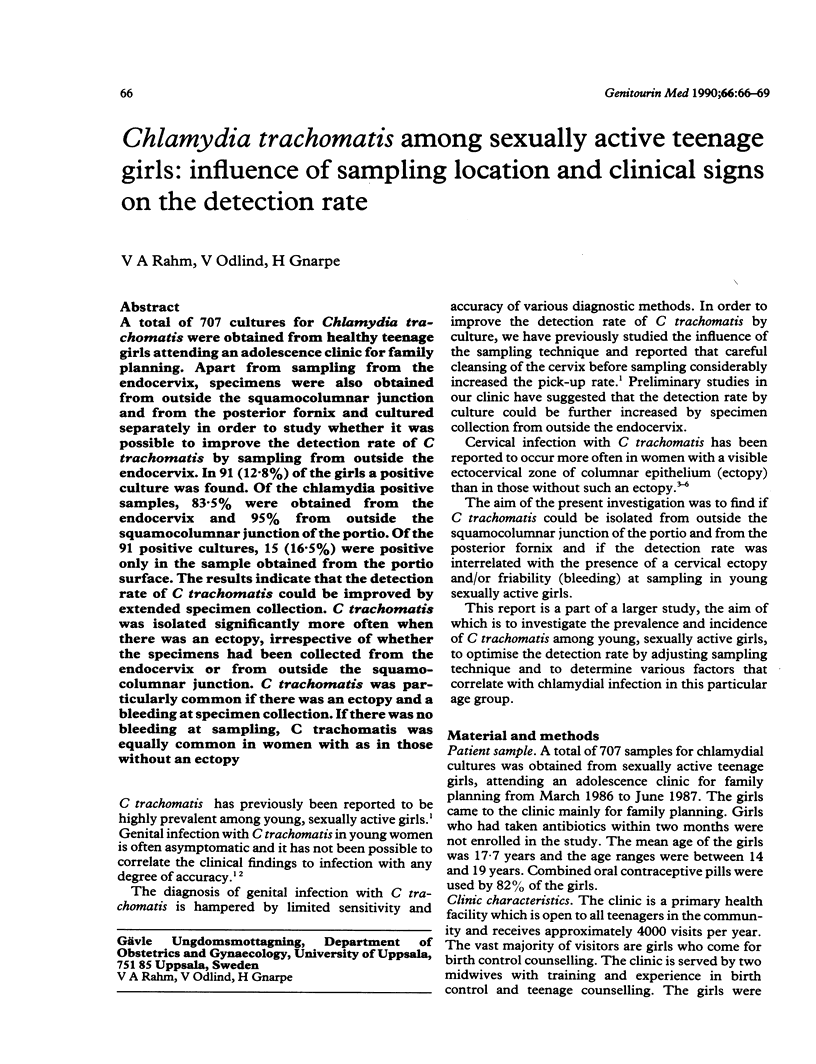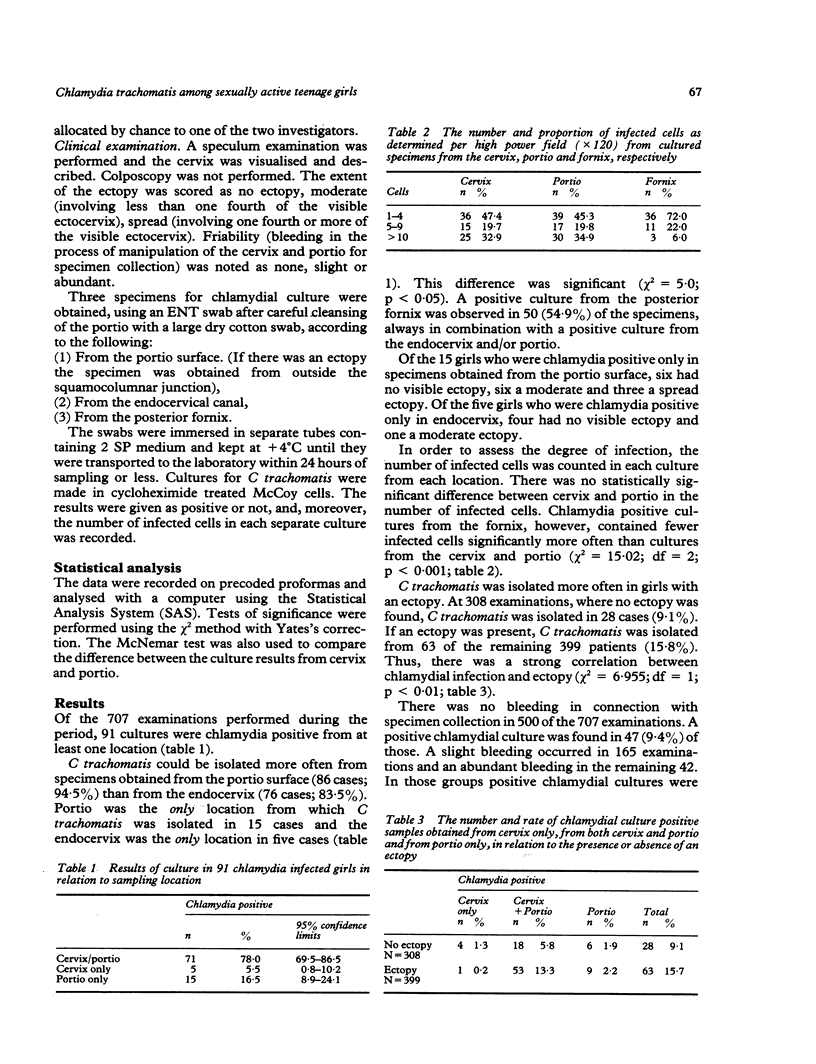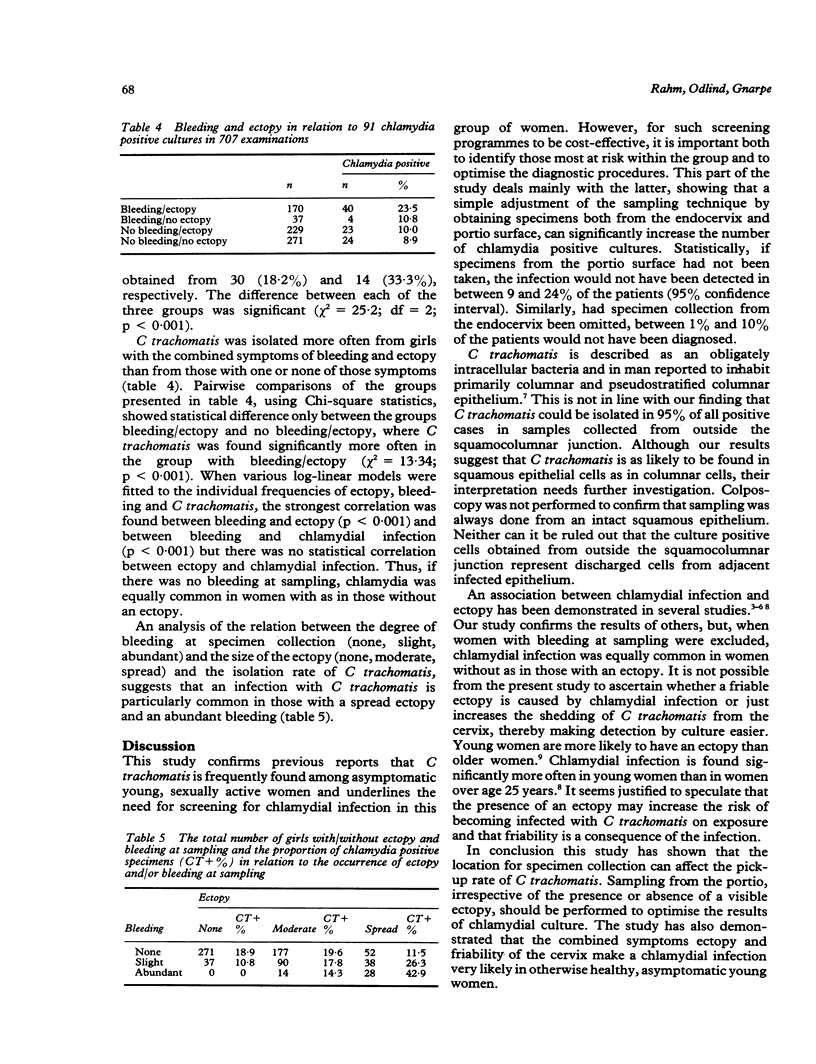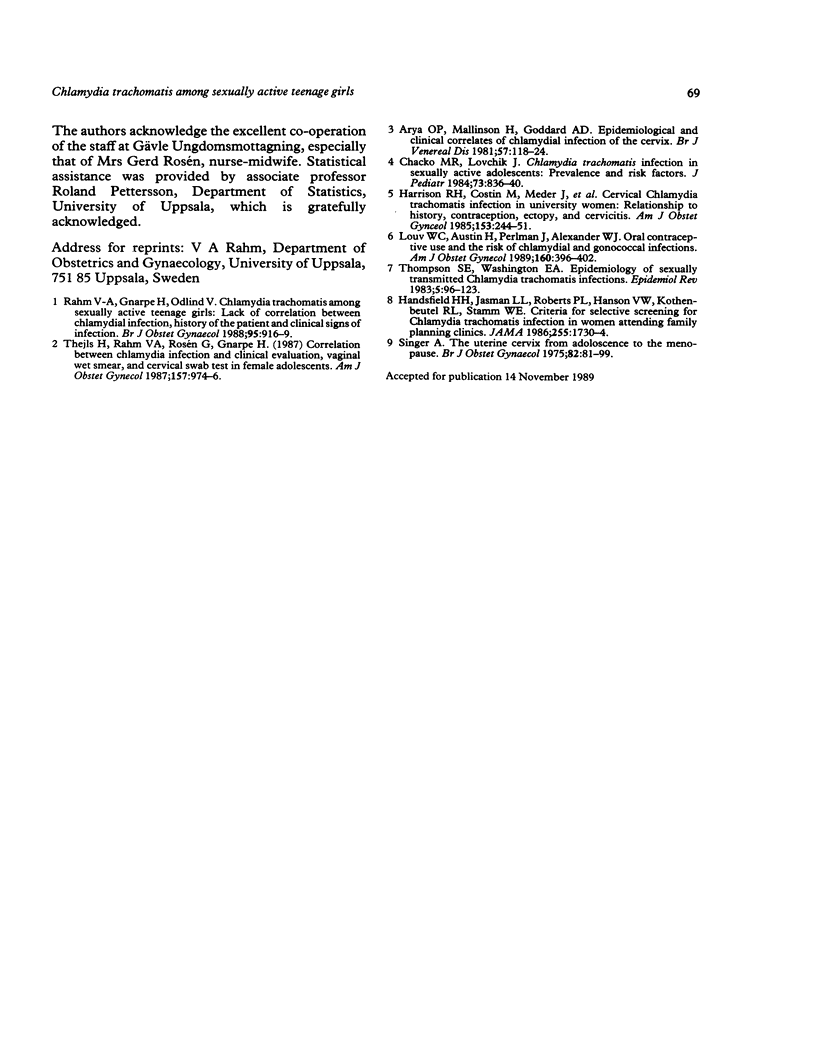Abstract
A total of 707 cultures for Chlamydia trachomatis were obtained from healthy teenage girls attending an adolescence clinic for family planning. Apart from sampling from the endocervix, specimens were also obtained from outside the squamocolumnar junction and from the posterior fornix and cultured separately in order to study whether it was possible to improve the detection rate of C trachomatis by sampling from outside the endocervix. In 91 (12.8%) of the girls a positive culture was found. Of the chlamydia positive samples, 83.5% were obtained from the endocervix and 95% from outside the squamocolumnar junction of the portio. Of the 91 positive cultures, 15 (16.5%) were positive only in the sample obtained from the portio surface. The results indicate that the detection rate of C trachomatis could be improved by extended specimen collection. C trachomatis was isolated significantly more often when there was an ectopy, irrespective of whether the specimens had been collected from the endocervix or from outside the squamocolumnar junction. C trachomatis was particularly common if there was an ectopy and a bleeding at specimen collection. If there was no bleeding at sampling, C trachomatis was equally common in women with as in those without an ectopy.
Full text
PDF



Selected References
These references are in PubMed. This may not be the complete list of references from this article.
- Arya O. P., Mallinson H., Goddard A. D. Epidemiological and clinical correlates of chlamydial infection of the cervix. Br J Vener Dis. 1981 Apr;57(2):118–124. doi: 10.1136/sti.57.2.118. [DOI] [PMC free article] [PubMed] [Google Scholar]
- Chacko M. R., Lovchik J. C. Chlamydia trachomatis infection in sexually active adolescents: prevalence and risk factors. Pediatrics. 1984 Jun;73(6):836–840. [PubMed] [Google Scholar]
- Handsfield H. H., Jasman L. L., Roberts P. L., Hanson V. W., Kothenbeutel R. L., Stamm W. E. Criteria for selective screening for Chlamydia trachomatis infection in women attending family planning clinics. JAMA. 1986 Apr 4;255(13):1730–1734. [PubMed] [Google Scholar]
- Harrison H. R., Costin M., Meder J. B., Bownds L. M., Sim D. A., Lewis M., Alexander E. R. Cervical Chlamydia trachomatis infection in university women: relationship to history, contraception, ectopy, and cervicitis. Am J Obstet Gynecol. 1985 Oct 1;153(3):244–251. doi: 10.1016/s0002-9378(85)80105-8. [DOI] [PubMed] [Google Scholar]
- Louv W. C., Austin H., Perlman J., Alexander W. J. Oral contraceptive use and the risk of chlamydial and gonococcal infections. Am J Obstet Gynecol. 1989 Feb;160(2):396–402. doi: 10.1016/0002-9378(89)90456-0. [DOI] [PubMed] [Google Scholar]
- Rahm V. A., Gnarpe H., Odlind V. Chlamydia trachomatis among sexually active teenage girls. Lack of correlation between chlamydial infection, history of the patient and clinical signs of infection. Br J Obstet Gynaecol. 1988 Sep;95(9):916–919. doi: 10.1111/j.1471-0528.1988.tb06580.x. [DOI] [PubMed] [Google Scholar]
- Singer A. The uterine cervix from adolescence to the menopause. Br J Obstet Gynaecol. 1975 Feb;82(2):81–99. doi: 10.1111/j.1471-0528.1975.tb02204.x. [DOI] [PubMed] [Google Scholar]
- Thejls H., Rahm V. A., Rosen G., Gnarpe H. Correlation between chlamydia infection and clinical evaluation, vaginal wet smear, and cervical swab test in female adolescents. Am J Obstet Gynecol. 1987 Oct;157(4 Pt 1):974–976. doi: 10.1016/s0002-9378(87)80098-4. [DOI] [PubMed] [Google Scholar]
- Thompson S. E., Washington A. E. Epidemiology of sexually transmitted Chlamydia trachomatis infections. Epidemiol Rev. 1983;5:96–123. doi: 10.1093/oxfordjournals.epirev.a036266. [DOI] [PubMed] [Google Scholar]


